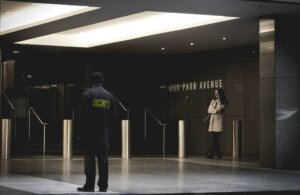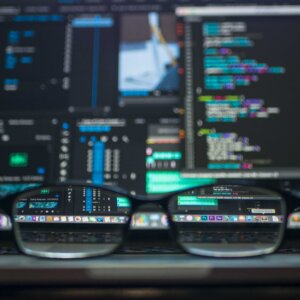Overview
 Although the COVID-19 pandemic continues, the U.S. is largely open for business and organizations have been welcoming employees back to the office as part of a hybrid model. But after such a turbulent 18 months, this return to a new normal comes with an uptick in violence and physical threats that are top of mind for security decision-makers, according to a new report commissioned by the Ontic Center for Protective Intelligence.
Although the COVID-19 pandemic continues, the U.S. is largely open for business and organizations have been welcoming employees back to the office as part of a hybrid model. But after such a turbulent 18 months, this return to a new normal comes with an uptick in violence and physical threats that are top of mind for security decision-makers, according to a new report commissioned by the Ontic Center for Protective Intelligence.
With the manned guarding services market expected to reach $220 Billion by 2024, clearly many organizations are opting for traditional methods of security. However, manned guarding may not be the best one-size-fits-all approach to security.
Let’s explore the shortcomings of manned security solutions and why a technology-driven approach that incorporates remote video monitoring is the most effective way to advance business continuity in today’s connected environment.
Common Challenges with Manned Guarding
Expense
One of the biggest barriers to manned guarding is the cost. It’s a dangerous job performed by a qualified individual, and as such, organizations on average pay $36,000 a year for every guard employed. Larger organizations will need to hire dozens of guards to effectively secure buildings and facilities, so the annual payroll expenses quickly add up.
Difficult to Scale Operations for Large Sites
Although few technologies can replicate human intuition and reasoning, there are physical limitations to what humans can do. Guards can only be in one place at a time, doing one thing at a time. It’s possible for guards to become distracted or otherwise preoccupied when a security breach occurs. Or a crime could be taking place at multiple areas of a property at one given time. In these cases, it’s very possible that a guard will miss the issue and won’t be able to respond accordingly in time to prevent a crime or safety incident. For companies with multiple large sites, scaling up security guard teams to ensure adequate coverage is necessary but also extremely costly.
Human Error
As mentioned, manned guards have their advantages but they are, of course, human and prone to mistakes, lapses of judgment, and fatigue. Most of the time guards are on duty, nothing of note happens. Companies can spend hundreds of thousands on manned guarding in a month and not have one crime occur. At the same time, the issue of security guards falling asleep mid-shift is a prevalent issue. Even federal security teams aren’t immune – guards at a U.S. nuclear power plant made headlines a few years ago when they were caught sleeping on the job on multiple occasions.
Is Remote Video Monitoring the Solution?
With so many manned security challenges, the question remains: what can businesses do to improve their physical security? For those looking for an easily scalable solution, remote video monitoring might be the most viable option.
Thanks to advancements in computer vision technology and broad acceptance of connected devices to enhance security, AI-based remote guarding solutions have emerged that effectively prevent crime and improve organizations’ security posture with the following benefits:
Highly Cost-Effective
Compared to what it costs to employ manned security teams, remote guarding solutions are a much more affordable alternative. Not only do you save on labor costs, AI-based remote video monitoring solutions dramatically decrease the rate of false alarms almost to zero, which can prevent expensive false alarm fines imposed by many municipalities.
Easily Integrates with Advanced AI Software
Many burglar alarm systems are marred by false positives. Traditional video verification solutions help some, but it’s often slow, expensive, and prone to missed threats. Remote guarding solutions that use advanced computer vision software ensure instant and accurate detections every time and make it easier for staff to focus on real security breaches.
Turns Surveillance Systems into an Active Form of Security
With remote guarding, existing “passive” security camera systems become “active” smart cameras that automatically alert security teams of threats in real-time so they can respond to the situation faster and prevent theft or harm. Look for cloud-based remote guarding solutions that readily integrate with existing hardware to reduce deployment costs.
More Efficient Deployment of On-Premise Guarding Resources
In the case that you are employing on-premise security guards, remote guarding solutions supplement human guards by alerting them to situations that are more likely to be real threats, as opposed to having them walk pre-planned patrol routes which often have easily exploited gaps in coverage. With the addition of remote guarding, fewer manned guards can effectively protect life and property for a fraction of the cost of a larger security force.
Consider an AI Integration with Actuate
 While manned guards are still important to ensure the safety and security of people and property, remote guarding solutions complement human efforts and greatly enhance organizations’ security postures.
While manned guards are still important to ensure the safety and security of people and property, remote guarding solutions complement human efforts and greatly enhance organizations’ security postures.
With the latest advancements in AI and computer vision technology, remote guarding ensures fewer false positives, fewer missed threats and can greatly reduce security costs for organizations, while also alleviating the burden on law enforcement.
Actuate’s remote guarding solutions are backed by industry-leading AI software developed by former Microsoft and Amazon engineers and reduce over 95% of false positives. Get in touch to learn more about how we can help solve your security challenges and get a demo today.




